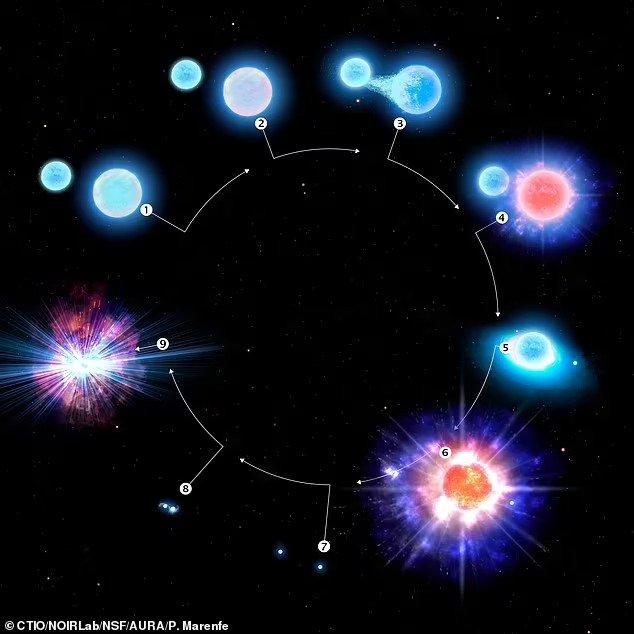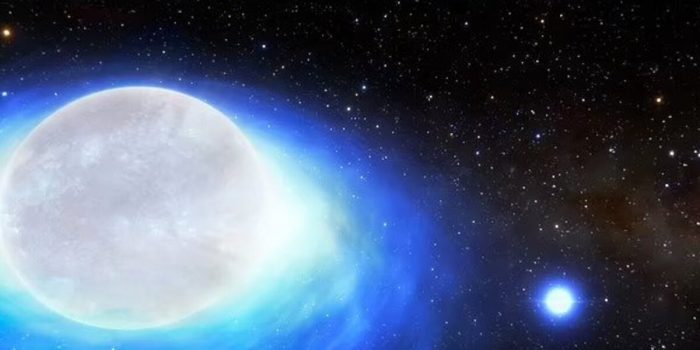A one-in-ten-billion binary star system may one day set off an ultra-powerful that showers space with gold. Astronomers used the SMARTS 1.5-meter Telescope at Cerro Tololo Inter-American Observatory in Chile, a Program of NSF’s NOIRLab, to make this first-of-its-kind discover. The team behind the discovery call the star system “phenomenally rare” and add that it features all of the necessary conditions to eventually trigger a kilonova.
The researchers describe it as an ultra-powerful, gold-producing explosion created when two neutron stars collide. The conditions needed for such an event are so exceedingly rare scientists believe that only about 10 such systems exist in the entire Milky Way galaxy.
The newly identified system is called CPD-29 2176 and is located about 11,400 light years from Earth. NASA’s Neil Gehrels Swift Observatory initially spotted the stars. Then, further observations made by the SMARTS 1.5-meter Telescope allowed astronomers to deduce the orbital characteristics and types of stars making up the system; a neutron star created by an ultra-stripped supernova as well as a closely orbiting massive star currently in the process of becoming an ultra-stripped supernova itself.
An ultra-stripped supernova is the end-of-life explosion of a massive star that has had much of its outer atmosphere stripped away by a companion star. This class of supernova lacks the explosive force of a traditional supernova, which would otherwise “kick” a nearby companion star out of the system.
“The current neutron star would have to form without ejecting its companion from the system. An ultra-stripped supernova is the best explanation for why these companion stars are in such a tight orbit,” said Noel D. Richardson at Embry-Riddle Aeronautical University and lead author of the paper. “To one day create a kilonova, the other star would also need to explode as an ultra-stripped supernova so the two neutron stars could eventually collide and merge.”

Kilonovas are massive explosions caused by neutron stars colliding with each other, sending intense jets of high-energy particles into space. They produce a bright flash of radioactive light that produces large amounts of important elements such as silver, gold, platinum and uranium. A merger between two neutron stars – some of the densest matter in the universe – produced an explosion 1,000 times brighter than a classical nova.
The exploding star then becomes a neutron star, but because its supernova lacks explosive energy, that means its nearby binary companion is not lost.
Although the CPD-29 2176 system has all the ingredients to eventually form a kilonova, it will take at least one million years for the massive companion star to end its life as a titanic supernova explosion and leave behind a second neutron star.
What will happen next is the two neutron stars will gradually be drawn towards each other, before they enter a sort of ‘cosmic ballet’, where they slowly lose their orbital energy in the form of gravitational radiation. The eventual would-be merger is then likely to lead to a kilonova explosion which would leave behind a large number of heavy elements, such as silver and gold.
‘This system reveals that some neutron stars are formed with only a small supernova kick,’ said Richardson.
‘As we understand the growing population of systems like CPD-29 2176 we will gain insight into how calm some stellar deaths may be and if these stars can die without traditional supernovae.’


